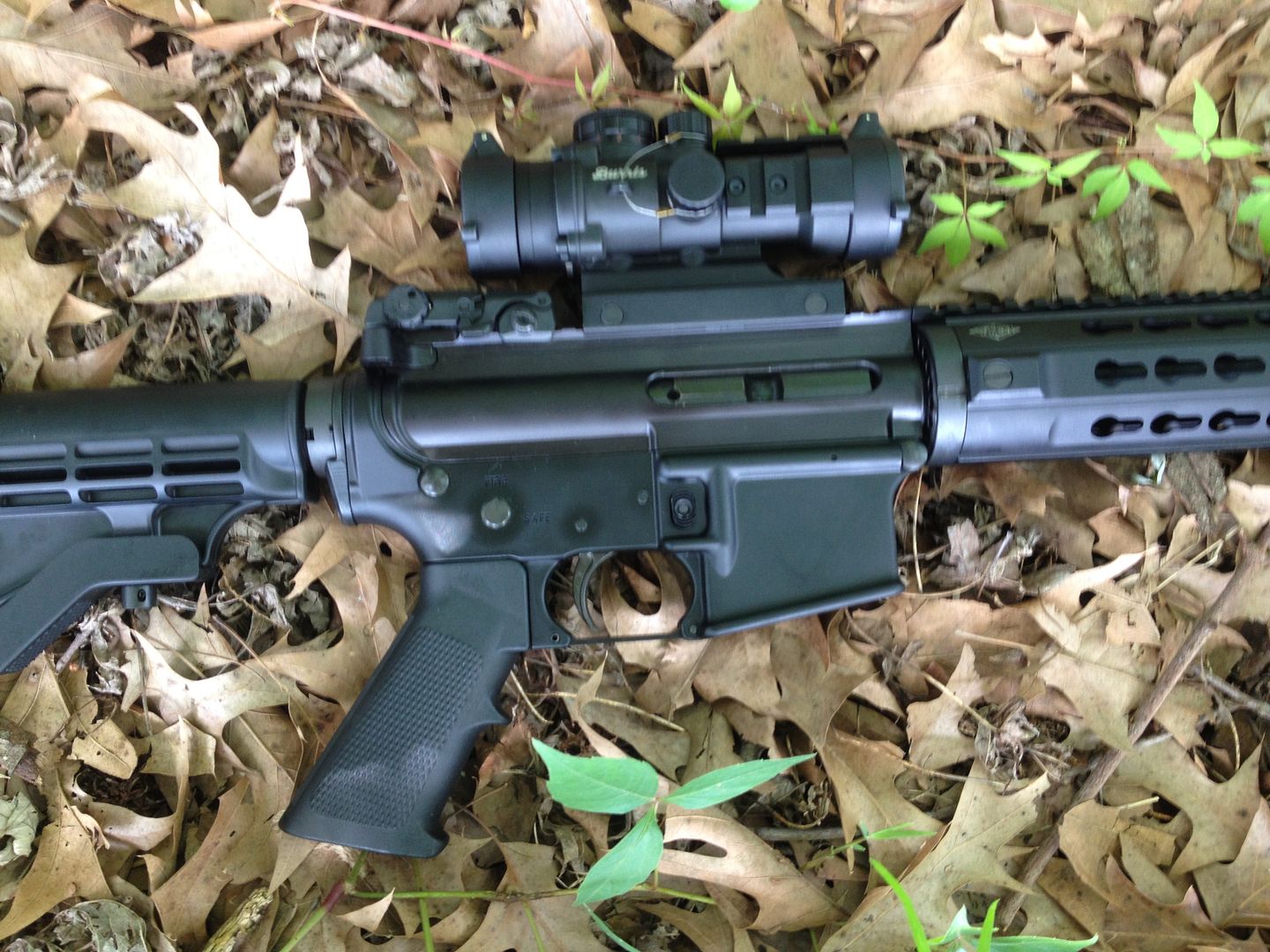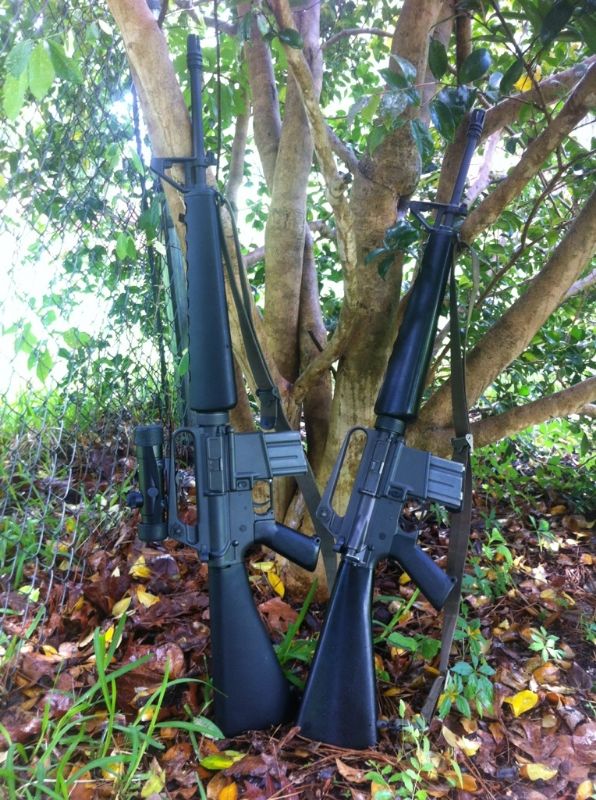A few thoughts on the AR-15 and shooting accurately.
1) I never had any issues qualifying with an AR-15 on head and shoulder sized targets out to 150 meters and torso sized targets from 200-350 meters, using an M16A1 and the standard iron sights. Most M16s in excellent, non abused condition would shoot about 1.5 MOA with M193 ammo, and that was about the limit of the iron sights on them
2) There is a great deal of benefit in learning to shoot well with iron sights. Aperture sights, like those on your AR-15 are easy to use as your eye will naturally center the front sight in the rear aperture. In the military, with the older M16A1 troops were taught where to hold on the target to compensate for the trajectory of the round with the 0-300m short range aperture and the 350m aperture, and if the shooter knew his stuff scoring 100 percent on the range was not a problem.
Some folk argue that a scope is "easier" and my response to that is "yes and no". A scope magnifies any instability in the shooter's position, and it can prevent the shooter from developing good trigger control.
With iron sights, you learn to accept some wobble in the prone position, and even more wobble in sitting and standing positions, and you learn to increase pressure on the trigger when the sight picture looks good and hold pressure on the trigger when the sight picture looks bad. That results in the shot always breaking when the sight picture looks good and is trending toward "better".
With a scope, the magnified wobble tends to lead shooter so jerking the trigger when the cross hairs are moving through the target. That doesn't work well and those shooters end up shooting ok from a bench or off a rest, but never shoot well in traditional position shooting or in the field where a solid rest can be hard to find.
My advice is to learn to use iron sights first. Once you are shooting 3-4" groups at 100 yards from an unsupported prone position, then worry about getting a scope. If you absolutely feel you want one now, get one with a maximum magnification of no more than 4x. A 3x or 1.5 to 4x scope where you can dial down the magnification is better.
3) The only challenge in shooting a perfect score on a military qualification range was sometimes seeing a freshly placed green target against the green foliage through the smaller long range aperture. After the target had been there awhile, the poorer shooters chewed up enough dirt around and behind the target to make them stand out. It supports the old adage that you can't hit what you can't see and that's the advantage a scope can offer.
4) Most folks put way too much magnification on a rack grade AR. Yes, one of my varmint ARs with a 20" bull barrel has a 6.5-20 on it, but my Match AR, one of my 20" pencil barrel ARs, and all but one of my carbines all have iron sights. The scoped AR in the rack has a 1-4x24mm scope on it, along with back up iron sights. My other 20" pencil barrel AR has a 4x20 Colt scope on it.
I'm not a fan of the P223 series in general, but if you get one, stay with the 1.5-4x20 or the 3x32 scopes. You don't need or want a 3-9x40 or a 4-12x40 scope on a 16" AR-15 carbine. You certainly don't need anymore than 3x or 4 x to hunt deer out to 300 yards. The Burris AR332 is also a good option for an AR-15 carbine:

5) Be aware that putting a scope on an AR changes the cheek weld. The standard rifle stocks and carbine tele-stocks are designed for a nose to carry handle cheek weld with the carry handle mounted sights and rail mounted dot sights. Scopes with large objective bells end up being mounted higher even on a picatinny rail and you have to adjust for that.
With a carry handle mounted scope like the original 4x20 or 3x20 Colt scopes, you end up with your chin almost on the stock to get an adequate cheek weld, but it works.

6) Texas is pretty liberal when it comes to allowable cartridges. As long as it's not a rim fire round, they allow it. That however does not make it a great idea. A .22 Hornet can be used to effectively take deer, but it requires a well placed neck shot. I put the faster but still small .223 Remington in the same category.
Yes, the .223 Rem can be ethically used to humanely take deer, but it requires a very skilled shooter who also has the discipline to pass on shots that are in less than perfect conditions. Those words do not accurately describe 95% of the hunters I see in the field. If anyone reading this thinks he or she is in that other 5%, he or she is probably overestimating his or her ability.